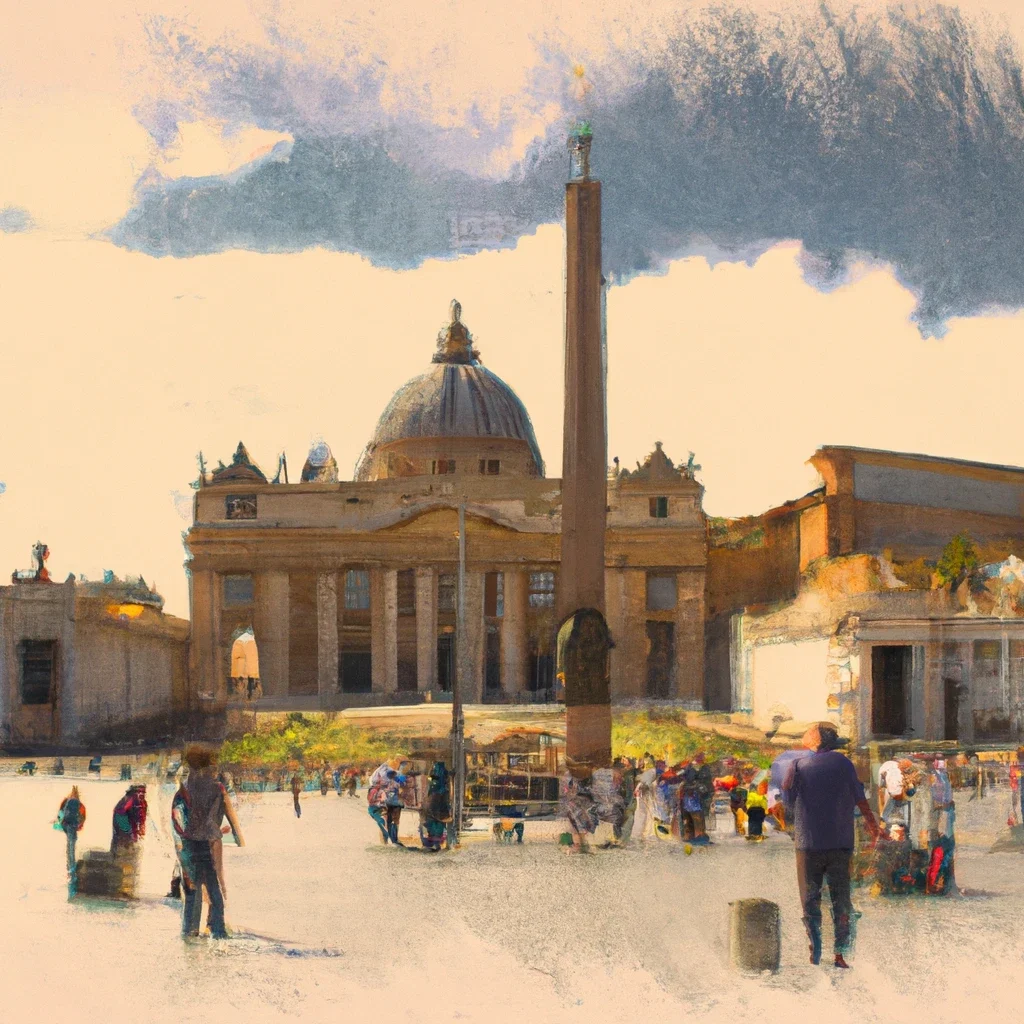Easter in Rome is a truly unique and magical experience, blending centuries-old traditions with modern celebrations. As the heart of the Catholic Church, Rome is a popular destination for Easter pilgrims. Still, even non-religious visitors will find plenty to see and do during this festive season. This article will explore the history, customs, and events that make Easter in Rome such a special occasion.
History of Easter in Rome Easter has been celebrated in Rome since the earliest days of Christianity, and the city is home to many historic churches and monuments associated with the holiday. The most famous is St. Peter’s Basilica in Vatican City, where the Pope leads Easter Mass and delivers his Urbi et Orbi blessing. The Sistine Chapel, located within the Vatican Museums, is also a popular destination for Easter visitors, as it features some of the world’s most famous religious art, including Michelangelo’s “The Last Judgment” and “The Creation of Adam.”
Customs and Traditions Easter in Rome is steeped in customs and traditions that have been passed down through the generations. One of the most popular customs is the Via Crucis, or Stations of the Cross, which takes place on Good Friday.
Via Crucis
The Via Crucis, or Stations of the Cross, is a solemn and symbolic procession that takes place on Good Friday in Rome and in many other Christian communities around the world. The procession follows the path that Jesus Christ is believed to have taken on the way to his crucifixion and death. The procession typically involves a series of 14 stops, or “stations,” where pilgrims pause to reflect on the events that led up to the crucifixion and death of Jesus.
The Via Crucis has its roots in the medieval period when it became popular to make pilgrimages to the Holy Land to visit the sites associated with the life of Jesus. As travel to the Holy Land became more difficult and dangerous, the practice of following the Via Crucis emerged as a way for people to participate in a symbolic journey that recreated the experience of the original pilgrimage.
In Rome, the Via Crucis procession begins at the Colosseum and ends at the Palatine Hill, near the Arch of Constantine. The route takes pilgrims through some of Rome’s most historic and beautiful neighborhoods, including the Forum Romanum and the Via dei Fori Imperiali. The procession is led by the Pope, who carries a wooden cross and stops at each station to offer prayers and reflections on the events of the Passion.
The stations of the Via Crucis vary depending on the tradition and the location, but they typically include the following:
- Jesus is condemned to death
- Jesus carries his cross
- Jesus falls for the first time
- Jesus meets his mother, Mary
- Simon of Cyrene helps Jesus carry the cross
- Veronica wipes the face of Jesus
- Jesus falls for the second time
- Jesus meets the women of Jerusalem
- Jesus falls for the third time
- Jesus is stripped of his garments
- Jesus is nailed to the cross
- Jesus dies on the cross
- Jesus is taken down from the cross
- Jesus is placed in the tomb
The Via Crucis is a powerful and moving experience and a testament to the enduring faith and devotion of Christian pilgrims. For many people, participating in the Via Crucis is a deeply spiritual and meaningful way to connect with the life and teachings of Jesus Christ and to honor his sacrifice.

Other interesting things about Rome during Easter.
Easter Food No Roman holiday would be complete without delicious food, and Easter is no exception. One of the most popular Easter dishes in Rome is Abbacchio alla Romana, or Roman-style lamb, which is typically roasted with garlic, rosemary, and potatoes. Another traditional Easter treat is Colomba di Pasqua, a sweet bread shaped like a dove and topped with almonds and sugar. This is often served alongside other sweet treats, such as marzipan fruits and chocolate Easter eggs.
One of the most spectacular events of the Easter season is the illumination of the Colosseum. Every year, the iconic monument is lit up in different colors, creating a stunning visual display that can be seen from all over the city. This is a great opportunity for visitors to capture some unforgettable photos and experience the magic of Easter in Rome.
Easter markets in Rome.
Would you like to enjoy a traditional Easter market in Rome? Wouldn’t it be nice if there was a fantastic Easter market at Piazza Navona? It would have been nice, but Rome does not have a fantastic Easter market. If you want to experience a nice Easter market, you should probably visit Prague or Vienna instead. It might not be a coincidence considering that Rome doesn’t really have fantastic Christmas markets either.
Easter in Rome.
Easter in Rome is an unforgettable experience, blending ancient traditions with modern celebrations to create a unique and magical atmosphere. Whether you’re a religious pilgrim or a curious tourist, there’s something for everyone during this festive season. From the solemn Via Crucis to the delicious Abbacchio alla Romana and the sweet Colomba di Pasqua, Easter in Rome is a feast for the senses that you won’t want to miss.

